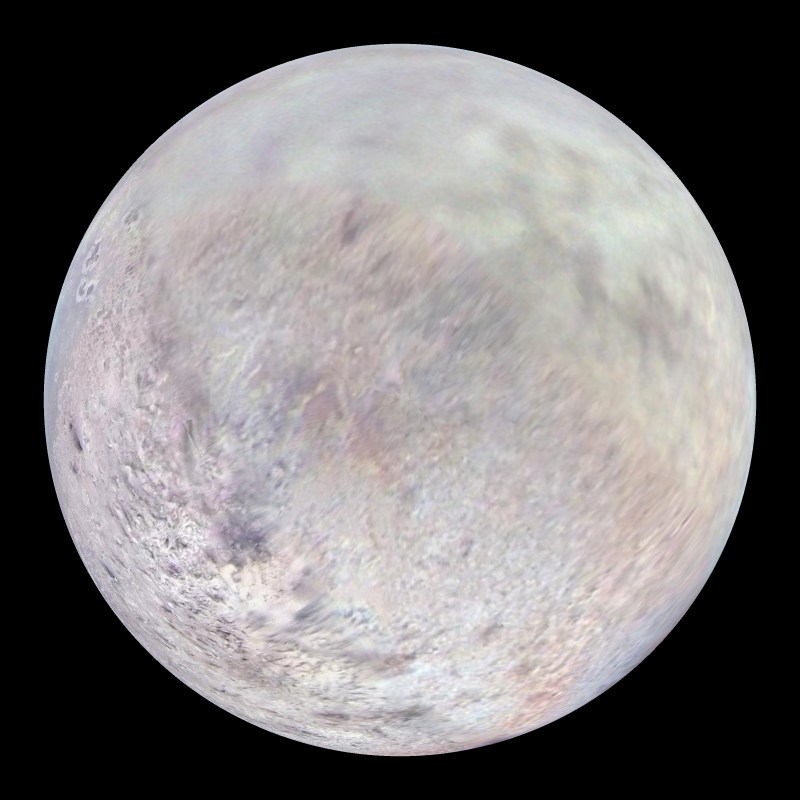

“They seem to come and go, a bit like cirrus clouds on Earth.” Though the clouds can last for days in Neptune’s atmosphere, “nobody really knows what these things are,” says Patrick Irwin, a planetary physicist at Oxford University in England, to the Times. These methane ice-clouds appear in Webb’s images as bright streaks and spots, since they reflect sunlight, per CNN’s Katie Hunt. Webb used its Near-Infrared Camera to observe Neptune, so the planet now appears more grey. To Voyager 2 and the Hubble Telescope, Neptune looked blue due to methane gas in its atmosphere. To Webb’s infrared gaze, though, Neptune doesn’t appear so blue-since methane absorbs infrared light, the areas of the planet not covered by bright, high-altitude clouds seem dark to the high-tech telescope, per. In previous images of Neptune taken by the Hubble Telescope, the planet has a Smurf-like blue hue, which is caused by methane in its atmosphere, according to ’s Robert Lea. Its small, rocky core is surrounded by a hot, dense fluid of water, methane and ammonia. Neptune, the farthest planet from the sun, was discovered in 1846.

“I have not seen it in that level of detail since the Voyager encounter in 1989. “The ring system was absolutely mind-boggling to me,” Hammel says to the Times. “So they’re much easier to see.”Īstronomers will be able to measure the reflectivity of the rings using Webb, and more research could provide insight into their size and composition, writes the Times. “The rings are more reflective in the infrared,” Mark McCaughrean, a senior advisor for science and exploration at the European Space Agency, tells the Agence France-Presse (AFP). The pictures show Neptune’s thin rings as well as faint dust bands, which scientists had never seen in the infrared spectrum before, per the AP. To get these new images, the Webb telescope detected near-infrared light, which is outside the visible spectrum. “I’m so happy that it has worked.”Ī zoomed out picture from Webb shows distant galaxies in the background. “I have been waiting so long for these images of Neptune,” Heidi Hammel, a NASA interdisciplinary scientist for the Webb telescope, tells the New York Times ’ Jonathan O’Callaghan. The pictures, taken in July and released Wednesday, provide the clearest and most detailed look at Neptune's rings since NASA’s Voyager 2 spacecraft flew by the planet in 1989, according to Marcia Dunn of the Associated Press (AP). These new views show seven of the distant planet's 14 known moons, but it's the rings that really take the spotlight. For further information please contact the gallery at or call its perch one million miles from Earth, the James Webb Space Telescope has peered deep into our solar system to capture images of Neptune. William Kentridge: History, Politics, Memory & Identity: Editions from 1986 to 2021 will be on view at the gallery from September 10th through October 29th, 2022. His work is in the permanent collections of the National Gallery of Art, the Hirshhorn Museum and Sculpture Garden, the Museum of Modern Art, the Metropolitan Museum of Art, as well as many other museums worldwide.

Kentridge will have a major exhibition at the Royal Academy in London this autumn. He has directed five operas and over fifty animated films. To date, Kentridge has participated in nearly 200 museum and gallery exhibitions worldwide. Most recently, William Kentridge was awarded the 2022 Queen Sonja Lifetime Achievement Award for printmaking. His art speaks of universal struggles such as freedom and loss.

The themes of Kentridge’s work stem from South Africa’s troubled history of Apartheid and continue with subjects drawn from history, politics, memory and identity. In addition to printmaking, Kentridge uses different media in his oeuvre including charcoal drawing, performance, film, painting, tapestry, and sculpture. The gallery neptune & brown exhibition will showcase works in all these mediums. Kentridge has been making editions for over forty years and his printmaking practice has drawn upon a wide range of techniques, including etching, aquatint, lithography, linocut, and drypoint. In 1981, he lived in Paris for one year while studying film, theater, and mime before returning to Johannesburg where he continues to live. Gallery neptune and brown is pleased to present William Kentridge: History, Politics, Memory & Identity: Editions from 1986 to 2021, our fifth solo exhibition with internationally renowned South African artist, William Kentridge.īorn in Johannesburg in 1955, to influential anti-apartheid lawyers, Kentridge studied politics and African Studies before attending the Johannesburg Art Foundation for fine art and drama.


 0 kommentar(er)
0 kommentar(er)
